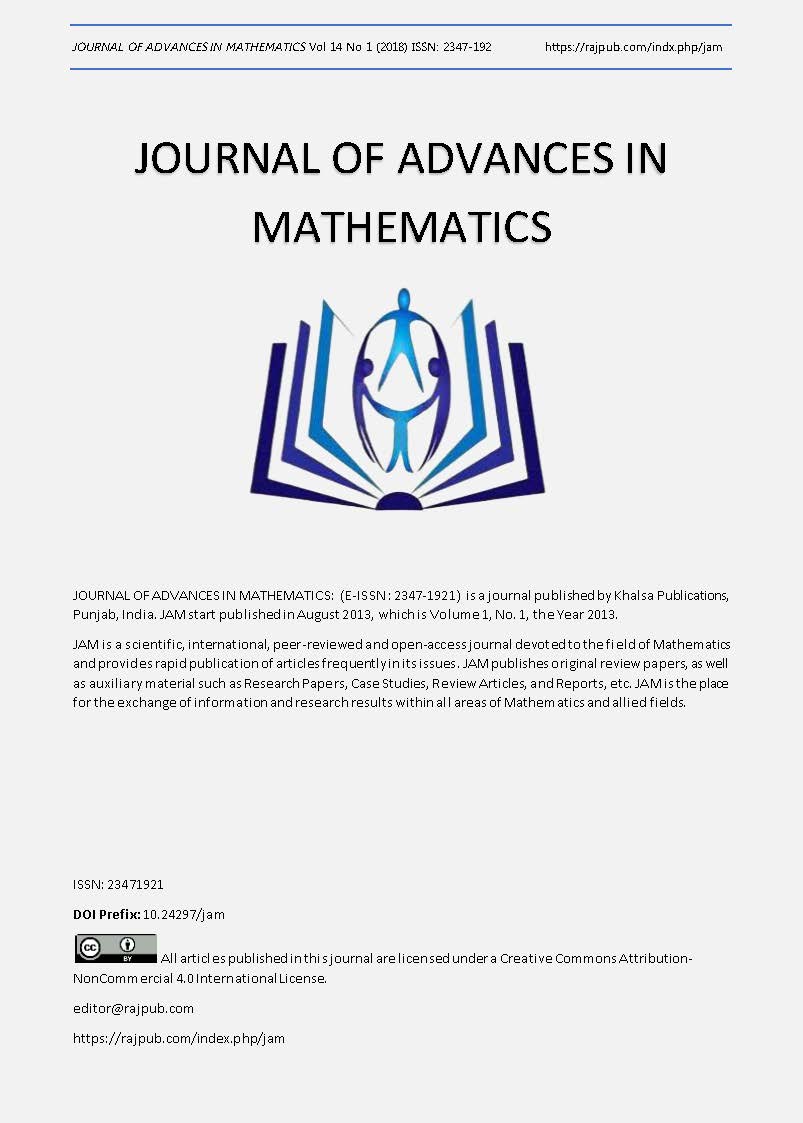Markov Stochastic Processes in Biology and Mathematics -- the Same, and yet Different
DOI:
https://doi.org/10.24297/jam.v14i1.7202Keywords:
Stochastic Matrix, Stochastic Kernel, Intensity Matrix, Intensity Kernel, Simulation Of Stochastic Process, Probability Space For Markow Stochastic ProcessAbstract
Virtually every biological model utilising a random number generator is a Markov stochastic process. Numerical simulations of such processes are performed using stochastic or intensity matrices or kernels. Biologists, however, define stochastic processes in a slightly different way to how mathematicians typically do. A discrete-time discrete-value stochastic process may be defined by a function p : X0 × X → {f : Υ → [0, 1]}, where X is a set of states, X0 is a bounded subset of X, Υ is a subset of integers (here associated with discrete time), where the function p satisfies 0 < p(x, y)(t) < 1 and EY p(x, y)(t) = 1. This definition generalizes a stochastic matrix. Although X0 is bounded, X may include every possible state and is often infinite. By interrupting the process whenever the state transitions into the X −X0 set, Markov stochastic processes defined this way may have non-quadratic stochastic matrices. Similar principle applies to intensity matrices, stochastic and intensity kernels resulting from considering many biological models as Markov stochastic processes. Class of such processes has important properties when considered from a point of view of theoretical mathematics. In particular, every process from this class may be simulated (hence they all exist in a physical sense) and has a well-defined probabilistic space associated with it.
Downloads
References
2. P. A. Ernst, L. D. Brown, L. Shepp, and R. L. Wolpert, Stationary gaussian markov processes as limits of stationary autoregressive time series, Journal of advances in Mathematics, 155 (2017), pp. 180–186.
3. P. A. Gagniuc, Markov Chains: From Theory to Implementation and Experimentation, John Wiley and Sons Ltd., 2017.
4. G. C. Ghirardi, P. Pearle, and A. Rimini, Markov processes in hilbert space and continuous spontaneous localization of systems of identical particles, Physical Review A, 42 (1990), pp. 78–89.
5. O. C. Ibe, Markov Processes for Stochastic Modeling, 2nd ed., Chapman and Hall, 2013.
6. M. Iosifescu, Finite Markov processes and their applications, John Wiley, 1980.
7. M. E. Johnson, Multivariate Statistical Simulation, John Wiley and Sons, 1987.
8. N. J. Johnson, S. Kotz, and N. Balakrishnan, Continuous Univariate Distributions, Volume 1, 2nd Ed., John Wiley, 1995.
9. J. Kelemen and P. Sos´ık, Advances in Artificial Life. 6th European Conference, ECAL, Prague, Czech Republic, 2001.
10. A. K. Klenke, Probability Theory: A Comprehensive Course, Springer, 2013.
11. M. Komosinski and A. Adamacky, Artificial Life Models in Software, Springer, 2005.
12. K. Li, X. Li, G. W. Irwin, and G. He, Life System Modelling and Simulation, International Conference, LSMS, Shanghai, China, 2007.
13. J. R. Norris, Markov Chains, Cambridge University Press, 1998.
14. A. E. Raftery, A model for high-order markov chains, Journal of the Royal Statistical Society. Series B (Methodological), 47 (1985), pp. 528–539.
15. A. Rønn-Nielsen and E. Hansen, Conditioning and Markov properties, Department of Mathematical Sciences, University of Copenhagen, on line: http://www.math.ku.dk/noter/filer/beting.pdf, 2014.
16. [M. Sokol, A probability space of continuous-time discrete value stochastic process with markov property, Journal of advances in Mathematics, 12 (2016), pp. 5975–5990.
17. S. Tuljapurkar, Stochastic matrix models, in Population and Community Biology Series 18, M. B. Usher, D. L. DeAngelis, and B. J. F. Manly, eds., Springer Nature, 2007.
Downloads
Published
How to Cite
Issue
Section
License
 All articles published in Journal of Advances in Linguistics are licensed under a Creative Commons Attribution 4.0 International License.
All articles published in Journal of Advances in Linguistics are licensed under a Creative Commons Attribution 4.0 International License.








